dillweed - Jun 2, 2006 6:31 am - Voted 10/10
a side noteScott, I tried to post this REPLY to your Climber's Log entry on Timp, and although it posted as a regular reply, it did not show up on either of our profile pages, so I will put it here.
Referring to this post
I completely agree with you Scott, by I am very surprised to hear that coming from you - you have climbed so many summits in the Rockies. Wow. I always just sort of wondered whether I got lucky by growing up near such an incredible mountain, but as I explore other beautiful places, I can't help but compare them with Timp, and most fall short. It really is an amazing place. Glad to see that someone agrees!
Scott - Jun 2, 2006 3:53 pm - Hasn't voted
Re: a side noteyou have climbed so many summits in the Rockies
Actually only the sections between West Central Montana and southern Colorado, and no climbs in the Canadian Rockies. I should have said US Rockies, though I was only repeating the statement made by Michael Kelsey, author of the Climbers and Hikers Guide to the World's Mountains.
Scott Wesemann - Jul 3, 2006 4:23 pm - Hasn't voted
Impressive!Very impressive article. I have been watching the Glacier for years now and I was really sad to see it completely dry in 2003. I really liked the old pictures and can only imagine what it would have been like to climb it in the early 1900's.
sopwith21 - Jul 22, 2006 1:51 am - Hasn't voted
Tragic, but not foreverThe glacier's epitaph is a bit premature. I'm sorry that its not here to enjoy now, but as with everything else, it will return sooner or later. All creation is cyclical and as much as we would like to think otherwise, we humans don't have near the impact on it that we would dearly love to imagine.
The photo series is really amazing and a joy to study. Thanks for posting it.
BobSmith - Nov 11, 2006 1:27 pm - Voted 10/10
Amazing.What a great summitpost. Very simply told in merely the photographs that greenhouse gases are changing our planet.
Bob Sihler - Dec 29, 2006 12:09 am - Voted 10/10
Amazing, yet sadI've seen similar evidence in Glacier National Park and the Canadian Rockies. The naysayers just piss me off when the evidence is so glaringly obvious. It's reasonable to debate what, if anything, to do, but denying it is just ignorant or dishonest.
I was on the "glacier" in 2002-- what a difference compared to that 2003 photo!
ktnbs - Dec 29, 2006 6:16 am - Hasn't voted
just re-readstill very fascinating.
hyperphil - Feb 13, 2007 8:28 pm - Hasn't voted
I was crevasse witnessI was on TERT in 1993 when the crevasse opened up. John Moellmer found it, and Paul Hart and I went up to check it out. It was eery--deep blue ice, 40 feet thick at least. The hole was DEEP. If you fell in, you'd be 30th century archaeological curiousity. I have a photo of it somewhere in my infernally huge collection of slides. Glen Meyer, the TERT director, got a glaciology team from Wash State to assay the ice. Their results were inconclusive as to whether it was truly glacial. The fact that the crevasse did not reappear in 2004 suggests it was moving, that is, glacial. Glacial or not, I NEVER walk down the middle of the snowfield any more.
Scott - Feb 13, 2007 9:44 pm - Hasn't voted
Thanks!I have added your comments to the article. If you ever find the photos feel free to post them to this article!
Sam Dunford - Mar 15, 2013 8:49 pm - Voted 10/10
Re: I was crevasse witnessI am glad that you posted this, and I would really like to know more. Exactly where on the glacier was the crevasse? How thick was the layer of rocks covering the ice? In what way were the results inconclusive? (i.e. in x it resembled glacial ice, but in y it did not) Would it be possible to find the photo and upload it?
Once again, thanks for posting the comment, and I would really like to know more :-)
Collin2 - Jul 6, 2007 11:54 pm - Hasn't voted
My Dad's ResopnseI sent my Dad this post and his reply may be interesting to some of you.
Collin,
Very interesting series of dramatic photos of the Timp Glacier. When I was
young it was thought to be a snowfield rather than a glacier, though most
still called it a glacier. I used to slide down it on my buttocks and it
hurt, but I didn't haul skis up to the top of Timp.
In the 1960s, when I climbed to the top of Timp at least 3 or 4 times, there
were big boulders protruding up through the glacier and the snow melted
around these rocks so that there was a hole between the glacier and the
rocks that might be six or seven feet. We avoided as best we could any
collision with the rocks on our way sliding down. At least that's what I
recall then.
Excuse me for being lengthy. I know you just sent me photos to look at, but
I still wanted to say a few things in regard to global warming theories. To
me, son, I don't have a big argument as to whether the planet's overall
climate may have warmed up a tad or not, but rather, my big argument with
the doomsayers of global warming stems from the claims by some that our
global climate is shifting dramatically into a warming trend that is mostly
caused by MANKIND. I believe that's ridiculous. Over 70% of earth is
unpopulated ocean surface effected mostly by the SUN. The polar caps have
few men on them. The vast northern areas across Russia and Canada remain
mostly unpopulated. Nature, especially the SUN, is the bigger factor in any
climate change by far.
Humor me with a bit of remanicing. When I first got married, in 1971, the
news media was terrifying everyone for a season with claims that scientists
believed we were moving into a new ICE AGE. NEWSWEEK and NATIONAL
GEOGRAPHIC made these coming ICE AGE claims. Then, when the ice-sheets and
ice age didn't materialize by the 1980s, we suddenly were being hit with
frightening claims that an OZONE HOLE was evidence that mankind was
destroying our atmosphere by using aresoal deoderants and air conditioning,
despite the fact that the OZONE HOLE was over the antarctic continent where
no air conditioners were used and few humans were using deoderant spray cans
that would supposedly harm the ozone layer of our atmosphere. We were told
this terrible activity of mankind was causing global warming and that
government, especially global government, must step in and save humanity
from doom.
My point is that, within the normal warming and cooling of global climate
displayed across human history, we are not in an unuasually warm climactic
change that warrents the fear mongering the media and government have
carried out. There was a much warmer climactic time period during the
middle ages and mankind actually benefited from that warm era as plants grew
better and there was agricultural plenty for all, then a "small ice age"
came and went and we are apparently on the warming end of that small ice
age. Its natural, not man made.
There's a sensationalism rampant in today's media, including the movies,
that shows the earth destroyed by weather-catastrophes such as rising oceans
that swallow New York City as the polar ice caps quickly melt due to
man-made global warming. Sadly, if too many people believe the
sensationalistic Hollywood- and-Al Gore-prophecies of doom they will destroy
their own economies by enacting such treaties as the Kyoto Treaty that would
deeply cut energy production and consumption and thus destroy ecomomic
growth and even reduce economies impoverishing us all.
After all, most green house gases are not even manmade. Such a
government-demanded cut in energy production and consumption is a more real
danger to humanity than the global warming scares the UN puts forth with the
help of the Establishment-controlled media.
Collin, while the Timp glacier may be retreating or even completely melting
some glaciers are actually advancing at this time. If glaciers retreating
are proof of global warming, then glaciers advancing are proof of global
cooling. They can not both be true at the same time. Unfortunately I don't
have time to find the names of the advancing glaciers for your
investigation, son, but you might be able to search some out. But, here's a
quote from a recent book on the topic of global warming:
"Advancing glaciers can be found within miles of their melting brethren yet
the former watch in loneliness as overheated journalists flock to the more
cooperative ice. Similarly, the vaunted disappearing ice caps generally
aren't disappearing. Much melting activity began at the end of the Little
Ice Age and continues, often found in areas that are actually experiencing
decades long cooling." (page 76-77, "The Poliltically Incorrect Guide to
Global Warming and Environmentalism," by Christorpher C. Horner)
The snow cap on Mount Kilimanjaro is receding -- despite decades of cooling
in Kenya-- due to regional land use and atmospheric moisture changes.
Anyway, thanks for the pictures. It is amazing that so much has changed with
the TIMP Glacier.
Dad
Sam Dunford - Jan 7, 2016 2:08 pm - Voted 10/10
Re: My Dad's ResopnseVirtually all scientific data confirms manmade global warming. 97% of climate scientists (thousands of people across the world) agree. The idea that this consensus is a political conspiracy would be laughable if the consequences weren't so serious, scientists live to prove each other wrong.
On the other hand, many, if not most or all, of the scientists and organizations that deny global warming can be traced back to the oil companies. They have spent billions of dollars to undermine the public's trust in climate science, using many of the same tactics tobacco companies used to try to discredit the fact that smoking causes lung cancer and other diseases. In fact, some of the same people are involved.
The idea that man cannot be having a big impact is what's ridiculous. We've drained the Aral Sea, which was once one of the largest lakes in the world. We've cleared half the tropical rainforest, along with other once vast areas of wilderness. animals that once roamed whole continents by the hundreds of thousands or millions are extinct or endangered because of us.
Atmospheric C02 levels have gone up by 40% since the industrial revolution. Natural causes are not nearly enough to explain this; humans actually put out about 130 times as much C02 as volcanoes do.
Yes the sun is where the heat originally comes from, but the atmosphere, oceans, and biosphere control how it's distributed. And we've measurably altered all three.
Yes there are advancing glaciers, but very few compared with the number of retreating ones.
Yes the climate has changed naturally in the past. However, natural fluctuations rarely happen as fast as global warming is. The temperature rise we've seen in the last century would normally occur over several centuries or millenniums.
Global warming is not beneficial, either. It causes droughts, flooding, and more severe storms. The damage done to our economy will be enormous if we do not fight it; far mare than if we do.
Please get your head out of the sand so we can work to fix this, people.
Sam Dunford - Jan 7, 2016 2:37 pm - Voted 10/10
Re: My Dad's ResopnseAnd yes there was a global cooling scare, but it wasn't based off of a solid consensus like global warming is. Yes the media does blow things out of proportion sometimes, but that doesn't mean the science isn't sound.
TyeDyeTwins - Apr 19, 2009 2:58 pm - Voted 10/10
Nice ArticleVery well done, nice to a see a local article on SP! Just hearing about the glacier completely melt out brings a tear to an indians eye. This precious beauty will one day (in my life time) become a distant memory. Too bad this type of story keeps occuring all over the world. Thanks for nothing GLOBAL COOKING!
asaking11 - Jun 18, 2009 3:15 am - Voted 10/10
Awesome ArticleNice write up Scott. My grandfather has a few pictures of when he climbed it in the 30's or 40's. I should see if I can find them.
Scott - Jun 18, 2009 11:54 pm - Hasn't voted
Re: Awesome ArticleThat would be awesome if you could add them.
phatty - Aug 27, 2009 11:48 am - Hasn't voted
Good WorkGreat article! I will be making my 4th summit of Timp in September. Will document some photos and post them for ya!
Sam Dunford - Nov 20, 2013 12:25 pm - Voted 10/10
Crevasse photosI emailed the Timpanogos Emergency Response Team (TERT) and Glen Meyer sent me some photos of the crevasse. How do I add them to the article?
Scott - Nov 20, 2013 12:51 pm - Hasn't voted
Re: Crevasse photosAwesome!
There is an "add image" tab on the left side of the article. It would be great if you could add them!
Sam Dunford - Nov 20, 2013 1:09 pm - Voted 10/10
Re: Crevasse photosIt isn't there.
However, in the images for this article I found a way to add one. Now all you have to do is add it to the article itself.
Here is the link to the image:
http://www.summitpost.org/timpanogos-glacier-crevasse/876737
This article is definitely the definitive work on the Timpanogos Glacier. Without it, me and many other people would never have known that there is a real glacier. Doing more research, I found that there isn't really any information on the Timpanogos Glacier that isn't in this article. I am corresponding with scientists at the U of U about doing more research. Since it is the last glacier in the state of Utah, it certainly deserves more study. I will add the other images I have, too.
Also, you say "if there is still a glacier buried in the talus" I'm certain there is. If any significant portion of that ice melted, the contours of the talus would change greatly, and they haven't. I also found the same crevasse photo you already have in the BYU photo archives, and it says 1907, not 1908.
Thank you for making this article! I am happy to help by adding the photos!


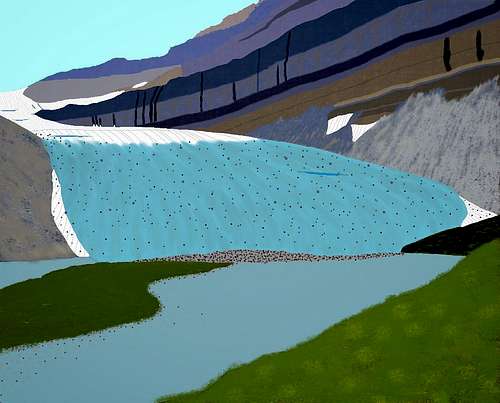
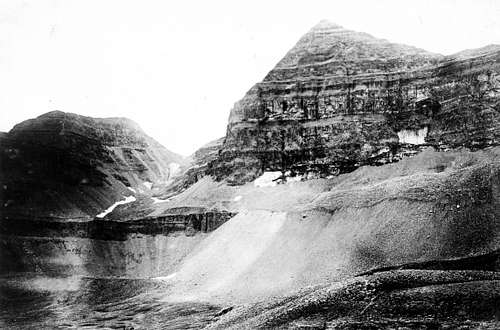
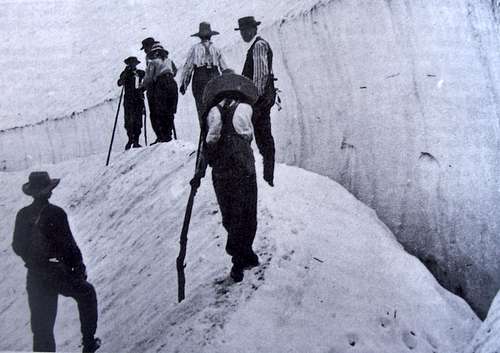
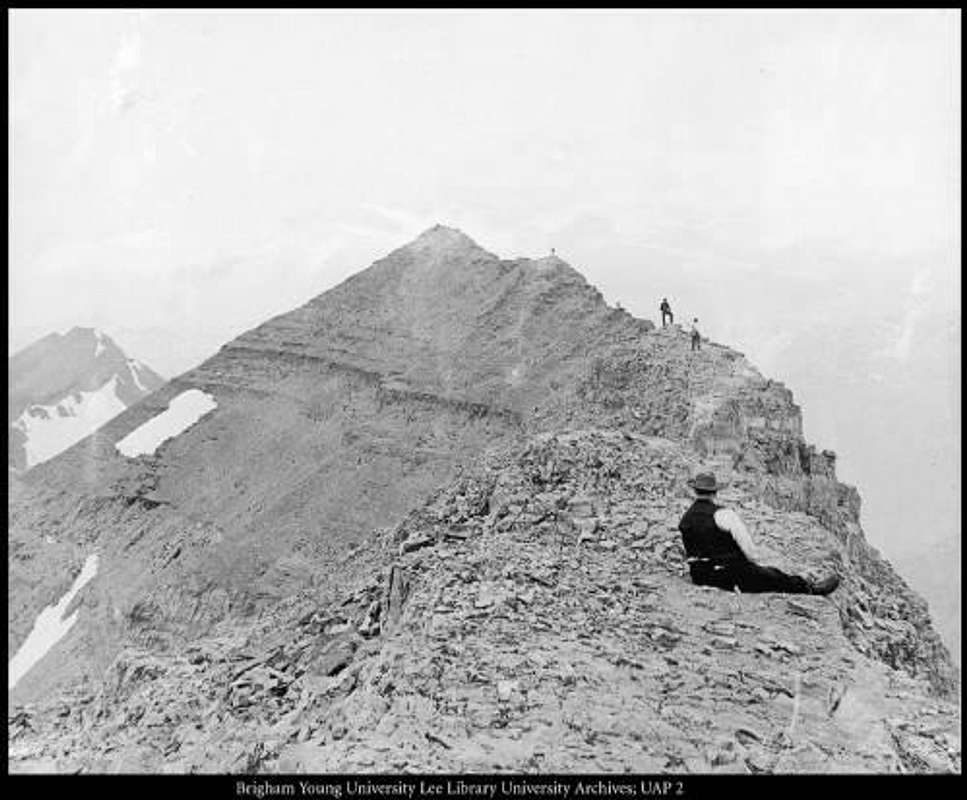
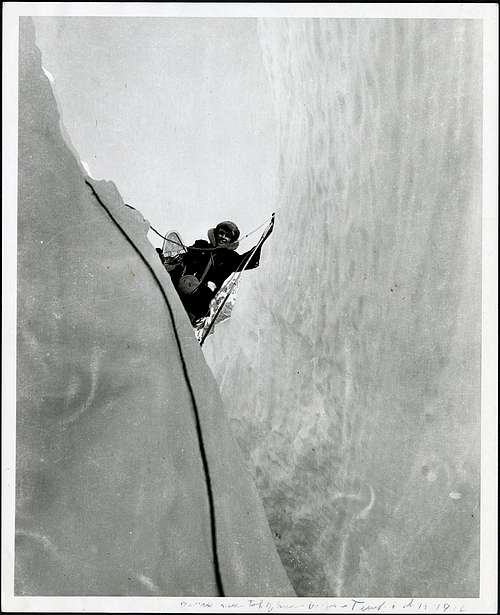



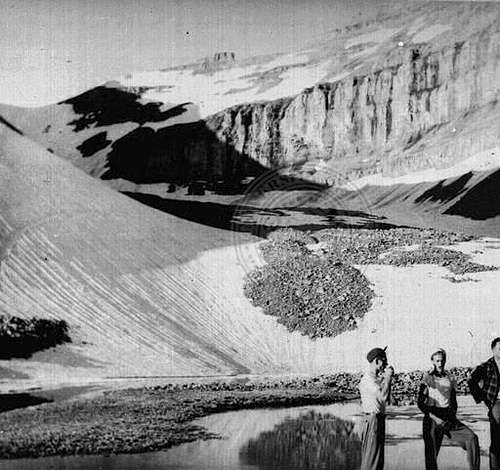
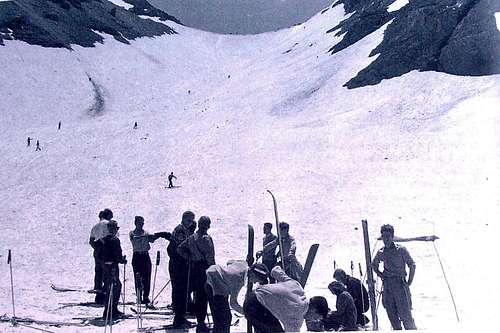
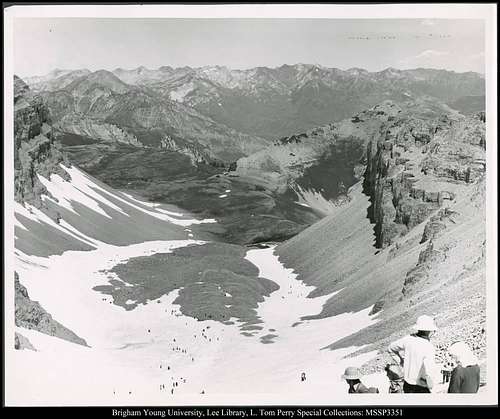
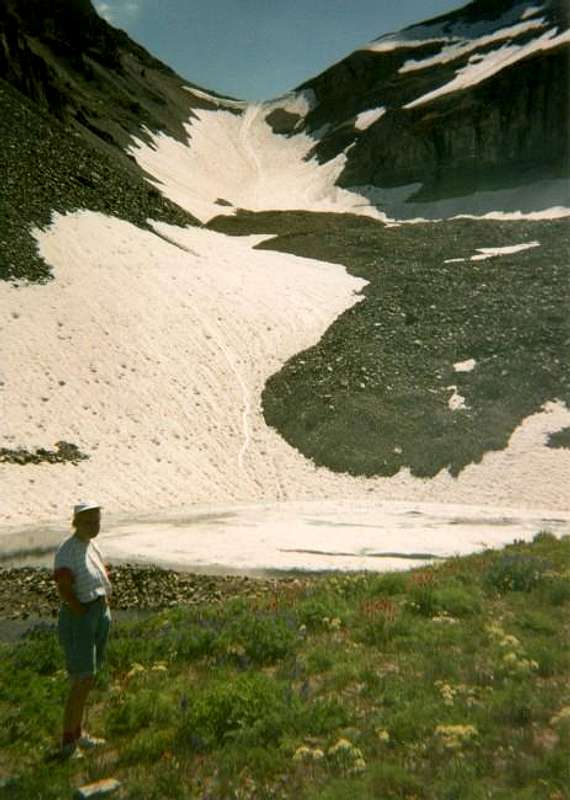


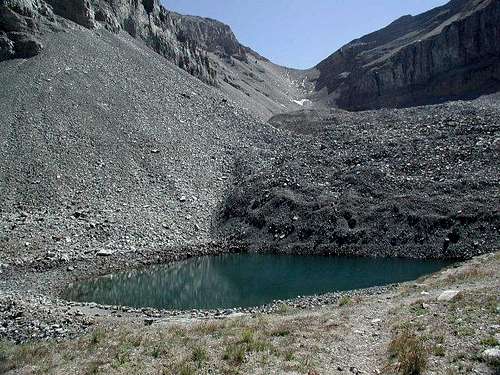
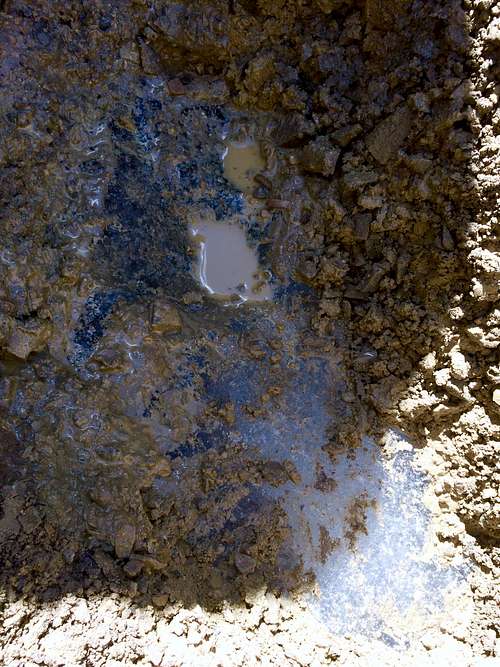
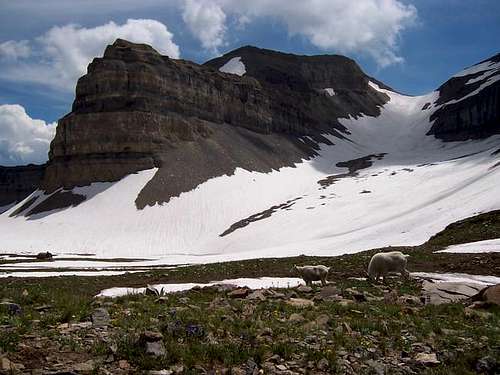
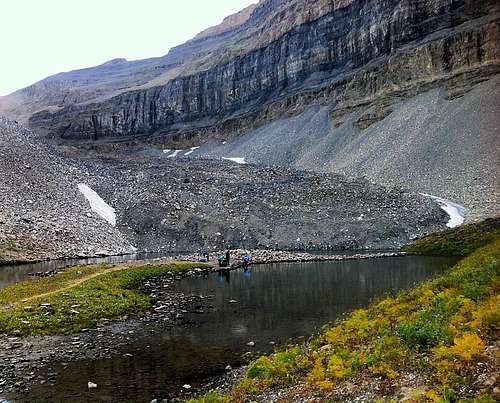











Comments
Post a Comment